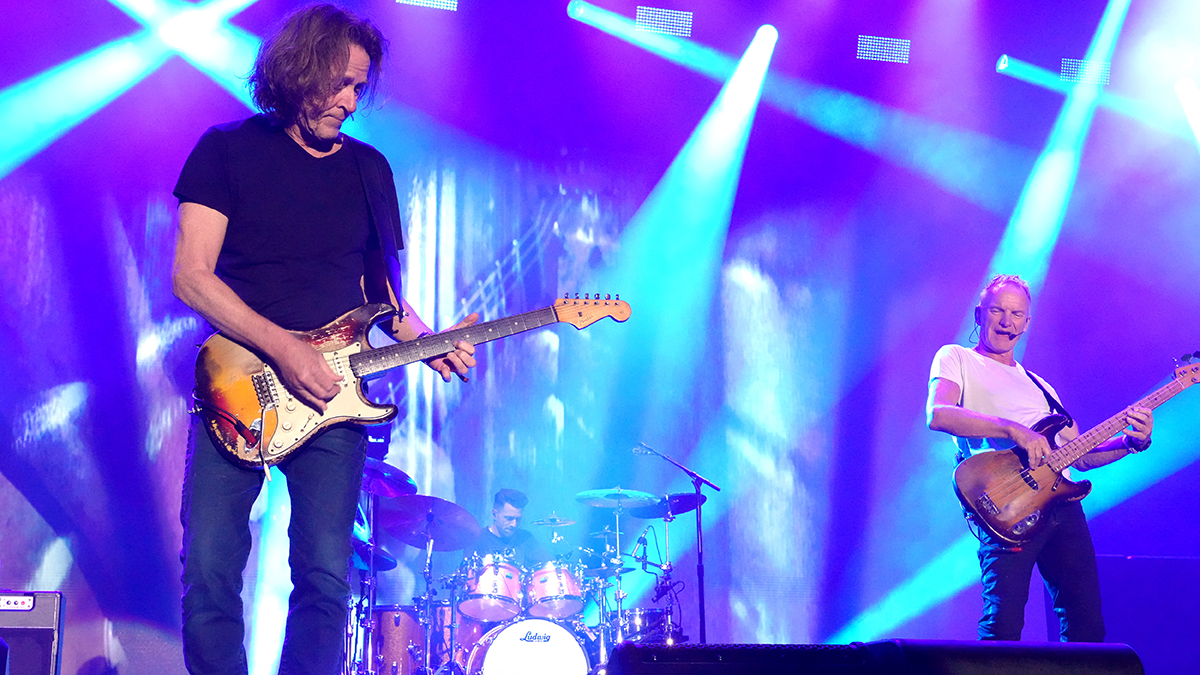How Jeff Loomis channeled charred earth to design his new Jackson signature 7-string – and why he's afraid of learning theory
The Arch Enemy shredder on creating the “most metal” guitar possible, his creative relationship with co-guitarist Michael Amott and the trio of new records he's currently working on
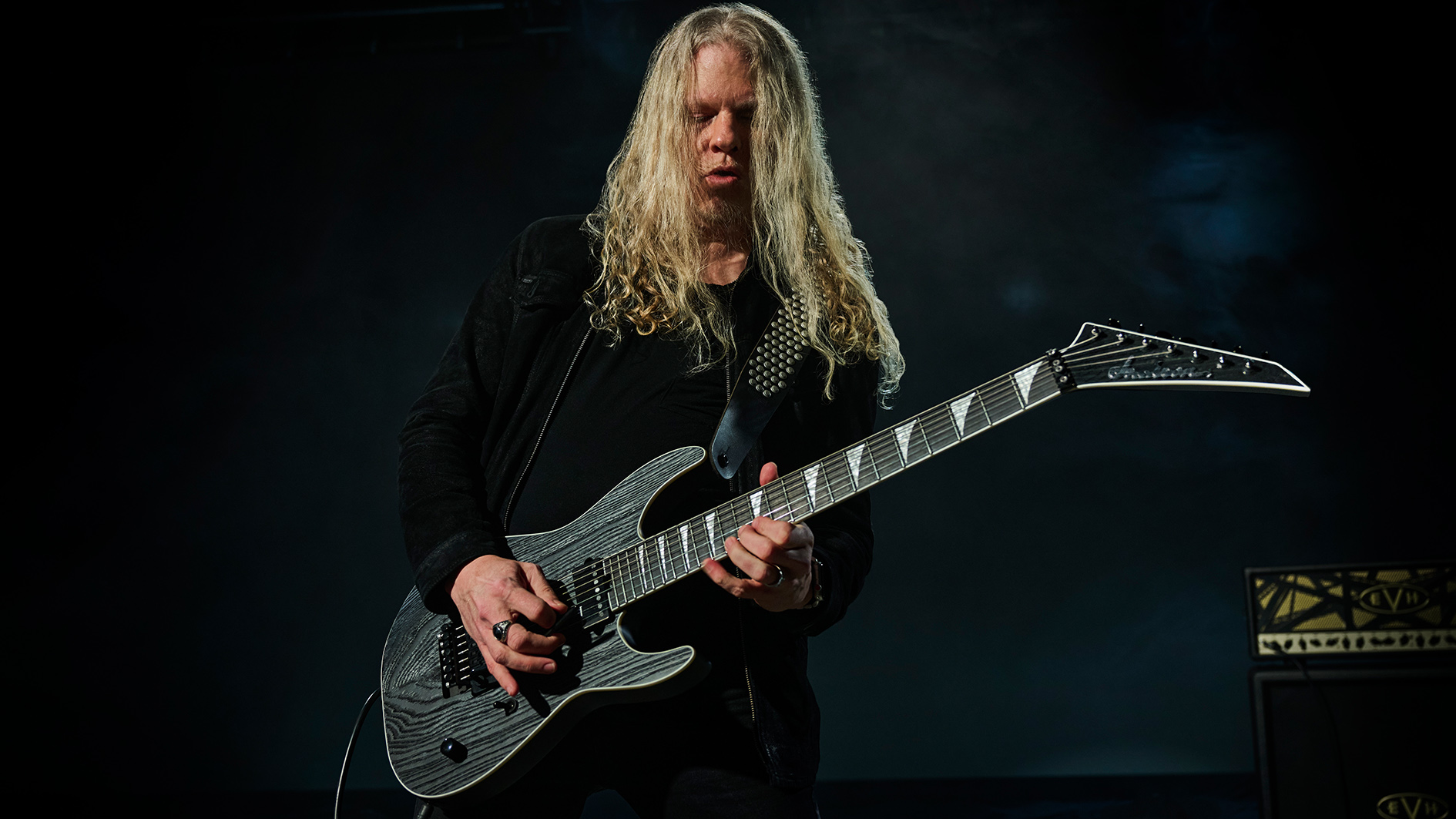
Announced at the beginning of this year, the all-new Jackson Pro Series Signature Jeff Loomis Soloist SL7 looks like one glorious beast of a metal machine.
Following on from the Arch Enemy guitarist’s six-string Pro Series Kelly, which we described as “one of the best metal signatures in recent years” in our 2021 review, it features the same jaw-dropping sandblasted ash top that we likened to “an Ikea shelf from hell” and Loomis’s delicately balanced signature Seymour Duncan Blackouts.
With the same tonewoods and Floyd Rose system, even Loomis himself admits the new addition is pretty much the exact same guitar, just reimagined as a seven-string Soloist – which is certainly an enticing proposition for fans of his extended range playing…
“We kinda went for the same vibe and look,” Loomis tells Guitar World, surrounded by all kinds of instruments and amps in his home studio. “In Arch Enemy, I’m solely using six-strings, but a lot of my repertoire outside of that has featured a seven-string.
“Given my history with Nevermore, the band I played in from 1992 to 2011, it felt like a lot of people wanted to see one come out. The body is made out of basswood, with the sharkfin inlays you find on most Jacksons. The binding is around the whole body, which I think makes the guitar really pop. The neck is thin and the frets are extra large, which makes bending and vibrato a whole lot easier…
“Then there’s also the wheel truss rod adjuster at the bottom of the neck. In Arch Enemy, we fly around the world and doing that can sometimes mess around with your necks. This makes it easy to adjust with an Allen wrench, though mine have graphite-reinforced necks which means they really don’t move compared to other guitars.
“The Luminlay side dots are perfect for dark smoky stages where you can’t see where the heck you are – you can always navigate through the fretboard in any live situation! It really is my perfect guitar.”
All the latest guitar news, interviews, lessons, reviews, deals and more, direct to your inbox!
You signed with Jackson in 2018. What exactly prompted the move?
“I was initially with a different company and was planning on being a bit of a free agent. I’m a guitar collector, just like anyone else, and have all sorts of different things.
“I was thinking about playing Strats and Gibsons at one point but Jackson really goes back to my roots when I was a teenager playing metal. They were the guitars I had at that age, so I feel right at home working with them.
“Being able to design stuff with [Senior Master Builder] Mike Shannon, sitting one-on-one with him to sculpt the neck dimensions and everything else, was a very cool process.
We thought of the most metal thing you could possibly see on a guitar. And we came up with this idea of charred earth, where you can actually feel the rough grooves in the wood with your hand
“The SL7 really is the perfect guitar for my needs. Anyone that follows me and likes my playing and music is more than welcome to purchase one. You’re not going to sound like me, but maybe it’ll help you get closer to my way of playing!
“I’ve got a bunch of Eddie Van Halen guitars sitting around here, but nothing can make you sound exactly like Eddie. Guitars like this are more about getting one step closer to your guitar hero, rather than the whole way.”
We have to say, the sandblasted ash top is one of the most metal finishes we’ve ever seen! What inspired that?
“That was basically an idea I had with Peter Wichers, who used to play in Soilwork. He works for Fender/Jackson now, in the artist development department. We wanted to put our heads together and think of the most metal thing you could possibly see on a guitar.
“And we came up with this idea of charred earth, where you can actually feel the rough grooves in the wood with your hand. I love it because it looks so metal, but at the same time it doesn’t fingerprint up with sweat marks and all that stuff. It just has this natural wood like on the top all the time.”
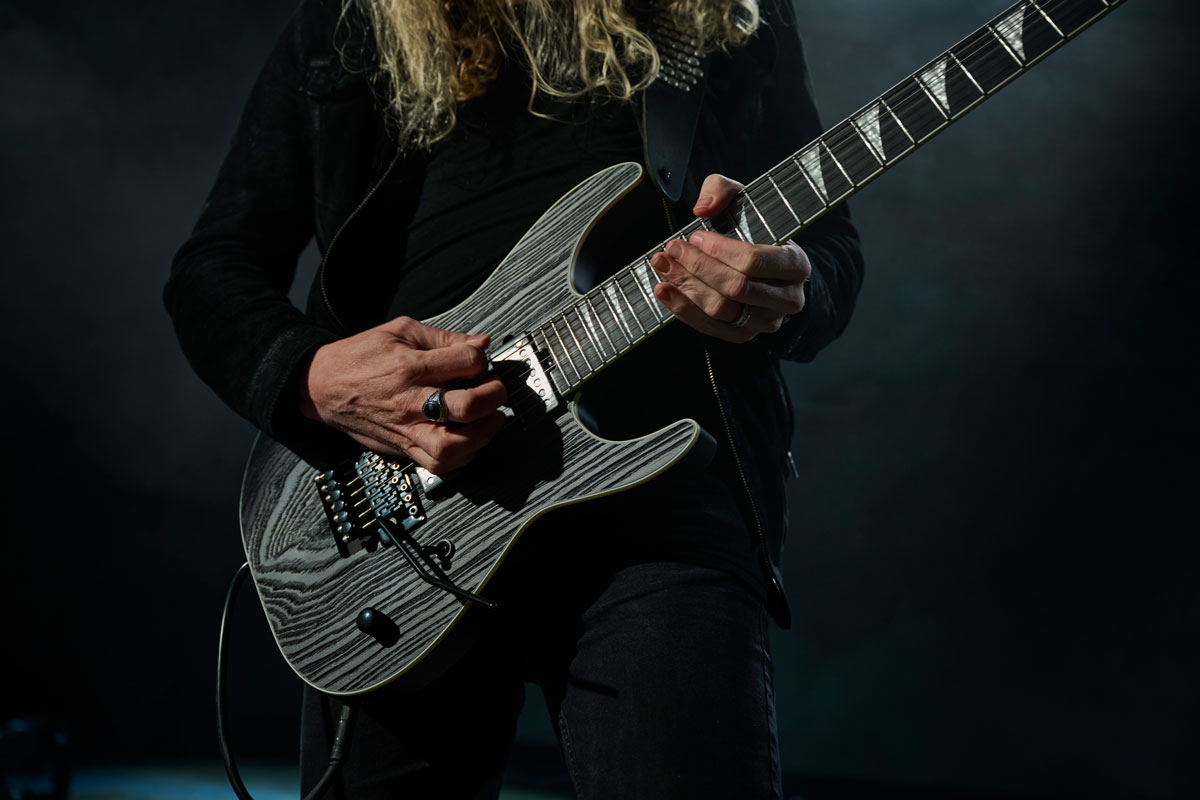
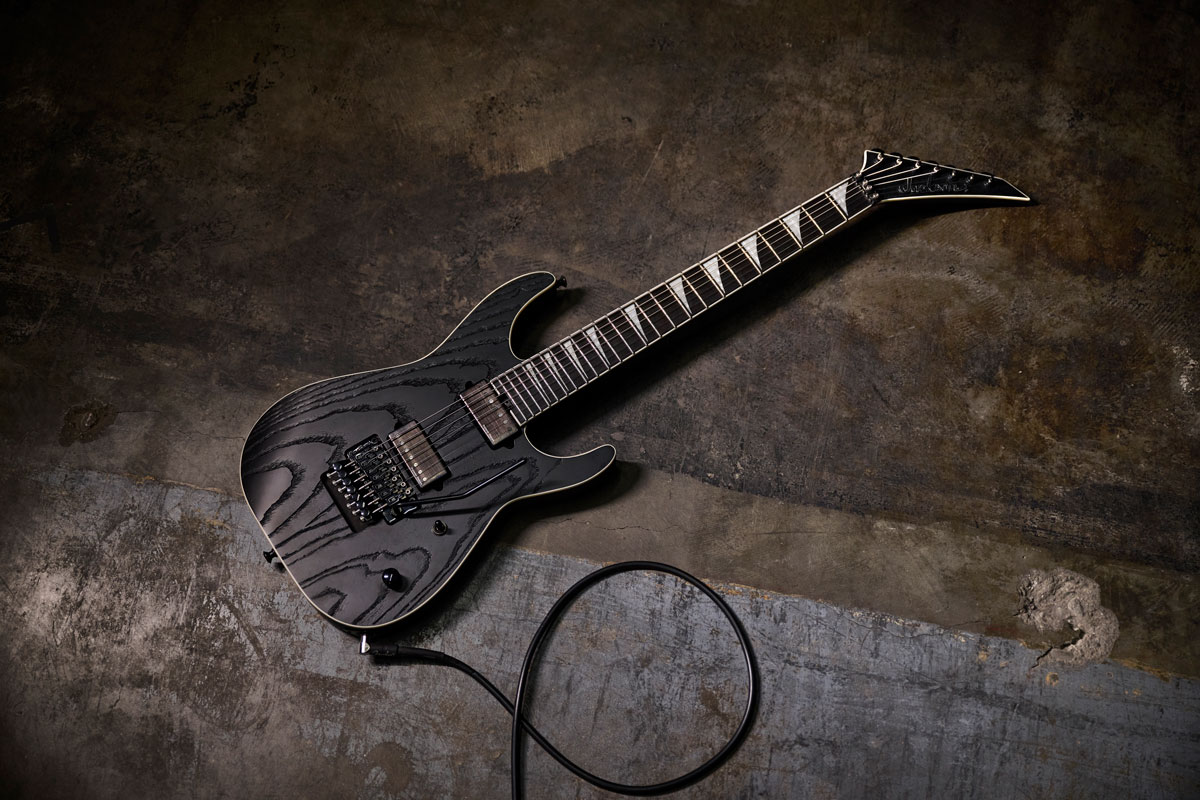
That’s not the only thing visually striking about your signatures…
“One of the biggest features for me is the raised logo. Most Jackson logos tend to be inscribed into the headstock, while this one is actually sitting on top of it. We called it the refrigerator aesthetic, because it’s steel sitting on top of wood and looks so nice.
“And then having the sandblasted top throughout, from the base to the headstock, gives it that really finished look. I couldn’t be happier: it’s a phenomenal guitar with awesome playability. It doesn’t just cater to metalheads, though! If you look at a guitar like this, you might think you need to play in a metal band to use one, but no. It’s well-rounded and sounds great for all styles… it’s for anyone, really!”
A lot of that comes down to your signature pickups, which are more tonally versatile than regular Seymour Duncan Blackouts, using Alnico 5 magnets instead of ceramics...
“I agree with you! They’re very musical. When I was designing the pickups, I wanted to make sure I had lots of output. Mainly playing metal, that’s what I tend to like, but if I need to play other styles, these Blackouts clean up easier. I can just dial back the gain on my amp or on my guitar volume, and I can get any tone I need.
I started listening to bands like Meshuggah and Korn, who had this mammoth heavy guitar tone. I kinda wanted to replicate that, looking to do something new with that kind of sound
“I’m constantly switching between my pickups for leads, so I like the selector really close to my picking hand along with one simple volume knob. The guitar has a Floyd Rose 1500 which is important because they come with a push/pull arm, while most Floyd Roses have the screw-in ones.
“I’m so aggressive with the whammy arm that it can often loosen up and start making this clicking noise that comes through the pickups… and I hate that! So having one that stays in position and never gets loose is very important to me.”
What do you remember about the first time you picked up a seven-string?
“I started playing seven-strings around 2000, so I’ve been playing these things for over 20 years. I started listening to bands like Meshuggah and Korn, who had this mammoth heavy guitar tone. I kinda wanted to replicate that, looking to do something new with that kind of sound.
“I had a friend of mine build me a seven-string which even had an 80-gauge string, which is for bass! And I used that guitar for the first seven-string Nevermore record, Dead Heart in a Dead World. I still have that instrument to this day! That was the start of my seven-string journey.”
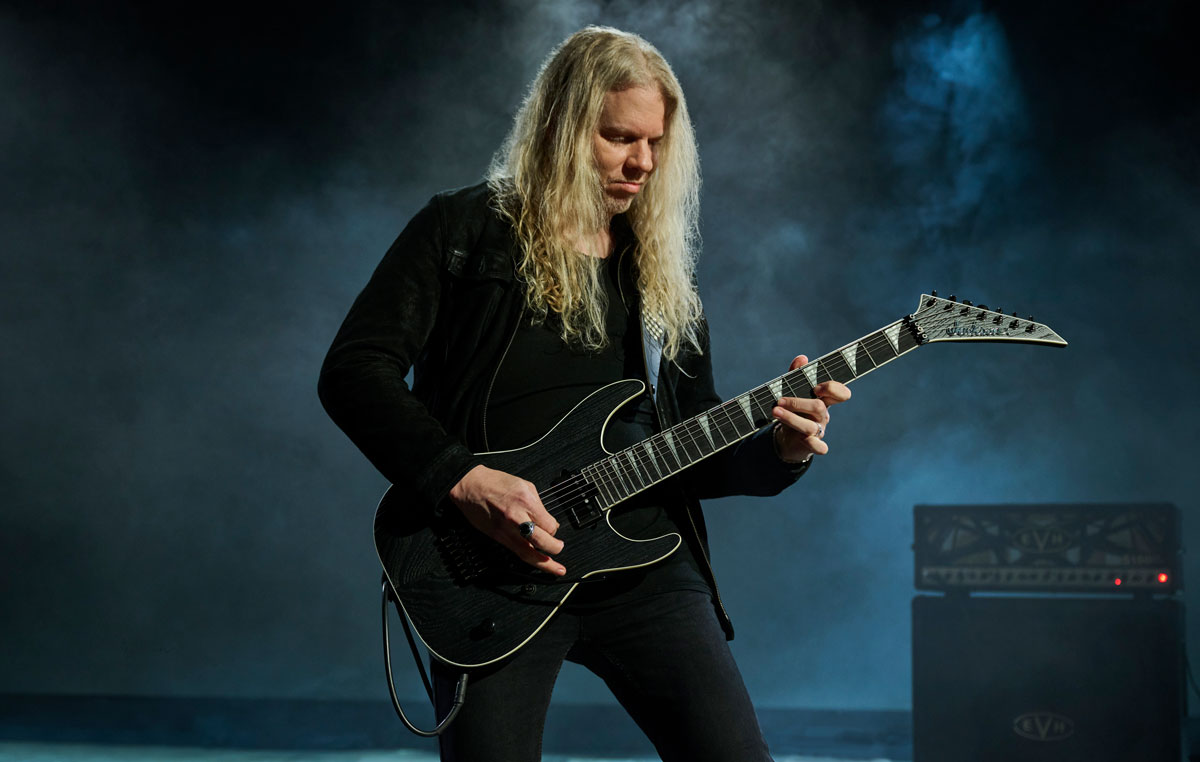
What were the main challenges compared with the six-strings you’d been playing before that?
“Mainly I just had to get used to the wider neck, which felt different. Once you get an understanding of the instrument, however, it’s really just an extra low B – which comes in handy for chords and chord extensions.
“I quickly realized it’s not that big a deal switching over from six. You just need to get used to it and stretch out your hand a little bit, and familiarize yourself with riding on that low E with another string behind it.
“For me, it was a little tedious to start with but all in all it was an easy transition. I play six and sevens so much these days – I don’t even think about switching between them. Though I only play six in Arch Enemy, a lot of my instrumental stuff and other projects feature sevens.
“Eight-strings, however, felt too different. I had one lying around for a bit and never really picked it up. You have to set your amp differently because it’s so much closer to bass. You need to dial in a whole different gain structure and yeah… it’s just too much for me. We’ll leave that for other people!”
The new Arch Enemy single, Handshake With Hell, features some clean vocals from Alissa White-Gluz. That certainly turned a few heads!
“We wanted to do something different with this new album and show a new side of Alyssa that people haven’t really heard in Arch Enemy. Lo and behold, she has this beautiful clean singing voice. It’s turned out great on this new album. We’ll be heading on tour in mid-April to the end of May, and then we have a bunch of summer festivals, followed by a big European tour at the end of the year. It’s going to be a busy year!”
So what kind of gear will you be taking out with you?
“I used to have real amps for live shows, but when you’re using heads from a backline company, quite often what you actually get can be rather inconsistent. I decided to go for something that’s way more consistent on a nightly basis, switching to the Line 6 Helix. I love it for many reasons.
“Firstly, it’s consistent and sounds the same every night. Everything is MIDI-automated and hooked up to my drummer’s laptop, which does all my preset changes. I don’t need to do the tap dance on stage or find the right button to kick in effects in the dark. It’s all done for me…
“I just have my guitar and my in-ears, and all I need to worry about is playing the best show ever. It’s a big plus! Sure, it’s a little time-consuming to program, but at the end of the day, it’s a massive time-saver and means I don’t need to stress.
“In the studio, I tend to stick with real amps. I’ve got an arsenal of heads at home, from Marshalls and EVH to Lenz, Revv and Omega. One of my favorites is the Jake E. Lee signature Friedman [the JEL-100], which sounds amazing.”
I tend to be the faster, more aggressive guy and Michael Amott's more of a bluesy and classic metal player
What’s the last pedal you acquired, out of curiosity?
“Gosh, I have so many pedals. The latest one I got is the Ibanez [40th Anniversary] Tube Screamer, but I’ve also got tons of Maxon pedals and other overdrives. I’m a big fan of chorus and reverbs for lush clean tones – there are hundreds here with me at home… it’s pathetic! [laughs]”
It has to be said, you and Michael Amott make a great team. He tends to write more classic metal-sounding, Michael Schenker-esque runs, while you’re more of a modern technical player…
“Totally! It’s a very nice balance. Michael has such great intonation with his bends – he always hits things so beautifully. It was really hard for me at first to match the harmonies, because it’s a perfection thing. You’ve really got to hone in on everything to make those moments shine.
“Wearing in-ears really helped, because I can always hear the nuances of his playing. And he’s phenomenal… like you said, I tend to be the faster, more aggressive guy and he’s more of a bluesy and classic metal player.
“Together it makes for a wonderful chemistry that really shines during our live shows. I’ve had so much fun with that guy. I’ve known him for so long. We met in 1998 or 1999, so it’s been a long time. We’re friends first and foremost and then after that the band stuff comes in. And that goes for Arch Enemy as a whole: they’re a great bunch of people. I love being in this band and couldn’t ask for a better gig.”
![[L-R] Michael Amott and Jeff Loomis of Arch Enemy](https://cdn.mos.cms.futurecdn.net/vro8TG3E8JKjJ2NTErx59Y.jpg)
Many of your solos over the years have featured blazing alternate picking runs. How exactly did you master the technique?
“I started examining it by watching Yngwie Malmsteen in that famous live show in Japan he played with Alcatrazz. There are a lot of close-ups of him at a time when he was setting the world on fire, around the age of 23. I noticed that it was all in the wrist with him; he’s never moving his whole arm.
“You even see that in a lot of gypsy jazz players, it’s all very fast and fluent and from the wrist. Another great wrist player was Eddie Van Halen: he always had the greatest tremolo picking sound back in the day.
“Then there are other players who use their arms, which I do too, but mainly for rhythms when I’m doing James Hetfield kinda stuff. When I play leads, I use three different styles – economy, alternate and some legato – and I can combine all three.
“To build my alternate picking I do what I call ‘flutter bombs’, where you pick one note as fast as you can for 20 seconds. Then you move up to 30 seconds and more, and before you know it, you’ve started to build up muscles in that area of your wrist. It becomes second nature.
I understand the basic fundamentals of the modes, but that’s really about it. I see music more as colors. It’s all about what sounds good
“Ultimately, the less effort you need, the better your picking will be because it’s all about being relaxed. That’s how you blast! These days, I’m more of a slower and emotional player. I prefer my leads to have memorable lines rather than just shredding really fast.”
It’s interesting how you’ve said you’re not much of a theory buff in the past – your solos definitely feel informed…
“It’s so funny, I come from a family of music lovers. My dad had a huge record collection and was a guitar player himself. Both my parents were teachers and they knew I loved playing so much that they let me stay at home and skip school to play! [laughs]
“Then my dad suggested taking some theory classes to move further, which I did and completely failed at. I could not understand one thing! My friend would be sat next to me whispering, ‘That’s an A dominant arpeggio, Jeff!’ and I’d be like ‘What?!’
“I understand the basic fundamentals of the modes, but that’s really about it. I see music more as colors. It’s all about what sounds good. I’ve been blessed with a really good ear – even when I was a kid, I’d jam along to the jingles on TV and instantly replicate them. My dad would be like, ‘How did you do that?!’
“So I’ve focused on my ear alone for my entire music career, going with what sounds good. I have friends who tell me, ‘Dude, I’ve seen you play a diminished line; you know that stuff!’ and I realized that I know how to play these things but I don’t know what they’re called. I just hear notes that sound nice to my ears!”
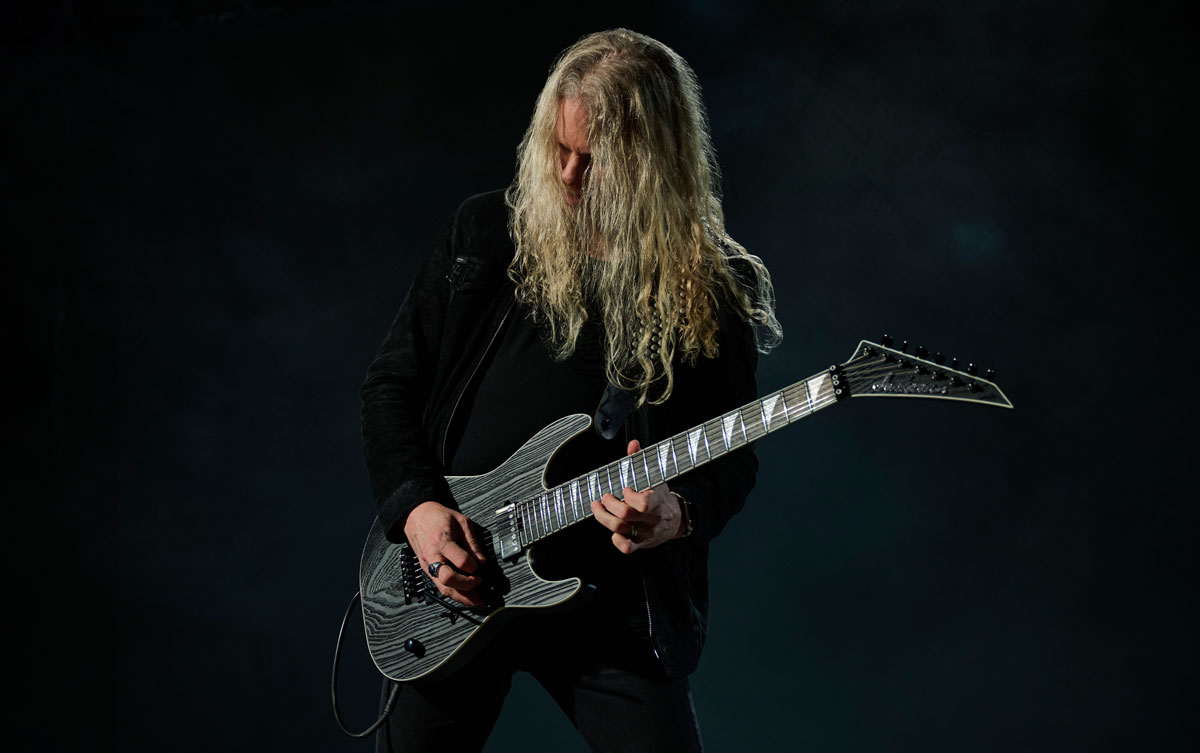
Well, Dimebag didn’t know much theory and he pretty much wrote the book for modern metal guitar.
“Exactly. I’m almost afraid of learning theory now. I’m almost scared that understanding more and figuring it out will take away the mysteriousness of everything. I like navigating around the fretboard, not really knowing where I’ll go until I hear the phrase that sounds best to me. That’s the fun of guitar playing!
“I don’t really have a big vocabulary of lead stuff. I’ve always just wanted to be a songwriter, and somehow I got lumped into the whole shred thing! I love coming up with riffs and writing a good song…
“That’s actually what I’m doing right now with the legendary Graham Bonnet from Alcatrazz. He’s a fantastic dude – we’ve become really good buddies over the last year or so. I’m halfway done with the writing for the album and will be finished by the time Arch Enemy start touring, which will give Graham 10 songs to work on, and hopefully we’ll record that album later this year.
“I also have an instrumental record coming out this year, while spending most of my time touring with Arch Enemy. It’s going to be a busy one!”
- The Jackson Pro Series Signature Jeff Loomis Soloist SL7 is available now. Arch Enemy's new album, Deceivers, arrives July 29 via Century Media Records.
Amit has been writing for titles like Total Guitar, MusicRadar and Guitar World for over a decade and counts Richie Kotzen, Guthrie Govan and Jeff Beck among his primary influences as a guitar player. He's worked for magazines like Kerrang!, Metal Hammer, Classic Rock, Prog, Record Collector, Planet Rock, Rhythm and Bass Player, as well as newspapers like Metro and The Independent, interviewing everyone from Ozzy Osbourne and Lemmy to Slash and Jimmy Page, and once even traded solos with a member of Slayer on a track released internationally. As a session guitarist, he's played alongside members of Judas Priest and Uriah Heep in London ensemble Metalworks, as well as handled lead guitars for legends like Glen Matlock (Sex Pistols, The Faces) and Stu Hamm (Steve Vai, Joe Satriani, G3).

